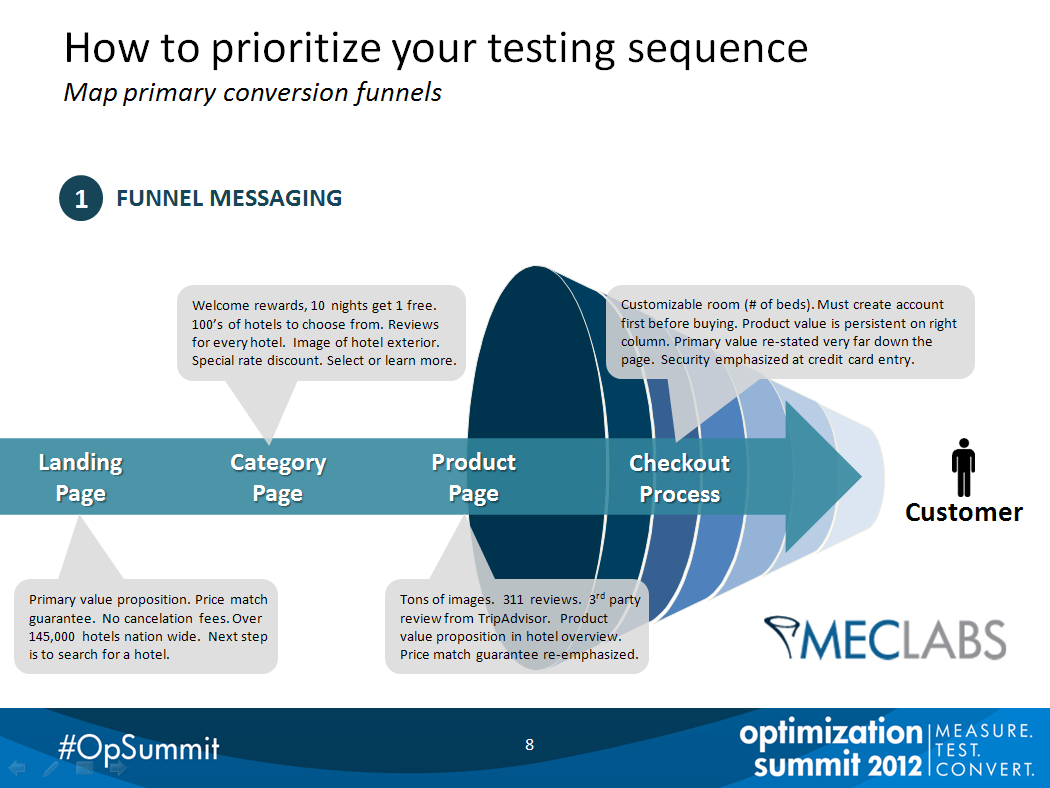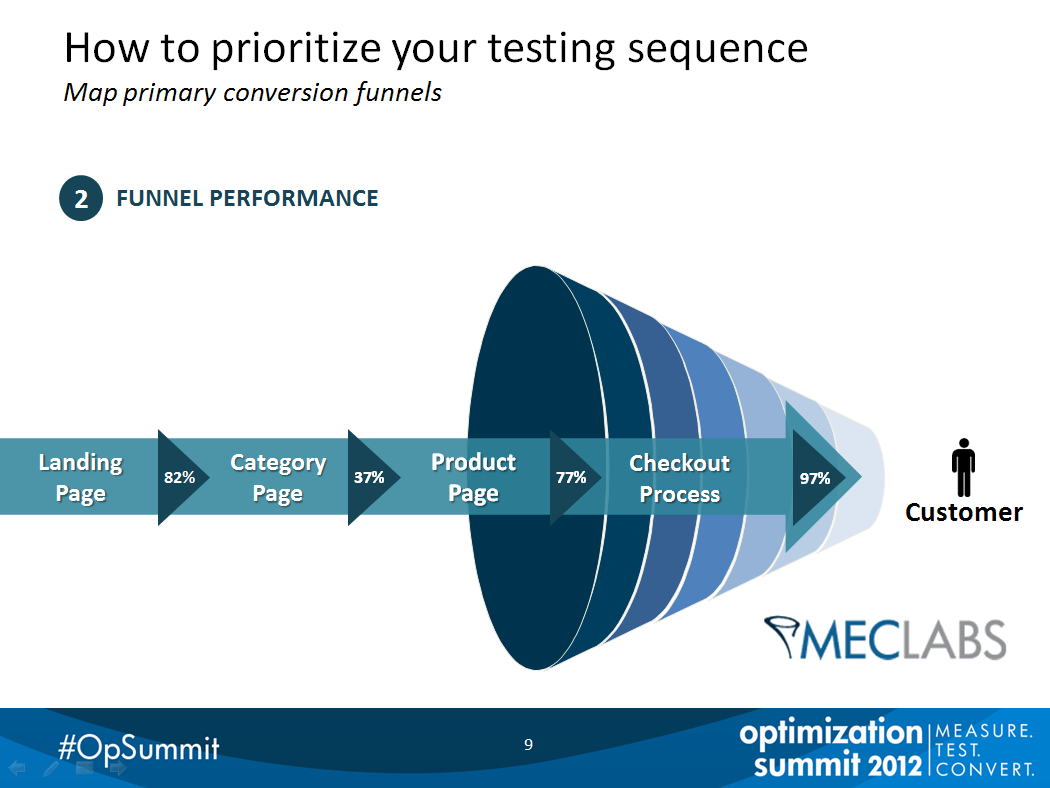Class Is In Session: Q&A with Web analytics professors about Optimization Summit 2012
You network with the most interesting people at a MarketingSherpa Summit, and Optimization Summit 2012 was no exception for me. I caught up with one of the top optimizers from Denmark and a nonprofit marketer heavily engaged in A/B testing, and I also met two professors in the increasingly popular Web analytics field.
With our next event, B2B Summit 2012 in Orlando, just around the corner, I wanted to take a moment to look back at our last event in today’s MarketingSherpa blog post and share an interview with those professors, who can provide a unique viewpoint on Internet marketing.
With their experience teaching others in the classroom and having to convey overall marketing principles, they are a step removed from the average in-the-trenches, brand-side marketers, overly focused on the “putting out today’s fire” crises that sap so many marketers’ attention.
And, since they’re not vendors of platform providers, well, they’re not trying to sell you on their unique marketing buzzword approach that just happens to map very nicely to the products and services they are trying to sell.
Ray Lam and Victoria Harben are adjunct faculty and teach Web Analytics, a graduate-level course in University College at the University of Denver. During Optimization Summit 2012, they live-tweeted the event to their students from @COMM4324.
MarketingSherpa: What were the top lessons you learned at Optimization Summit that you think could be helpful to brand-side marketers?
Victoria: The main point that was reiterated throughout Optimization Summit was to always test; don’t rely on assumptions, intuition, guesstimations, or theory — rather, get out there and test it. It’s always best to back up a hunch with data, and that’s exactly what the Summit instilled in me: test, test, test! We’re teaching a Web Analytics class at DU through the New Media and Internet Marketing program, and this is the first thing we tell our students.
Ray: The top lesson I learned was Dr. Flint McGlaughlin’s conversion formula: C=4m+3v+2(i-f)-2a. Where m=motivation, v=clarity of value proposition (why), i=incentive to take action, f=friction elements of the process, and a=anxiety about entering the process. This simple formula helps marketers think about the different elements that need to be considered when constructing a landing page.
MarketingSherpa: Web analytics can often be overwhelming to marketers. There are so many numbers; it can be difficult to find true meaning. What Web analytics tips did you pick up at Optimization Summit?
Victoria: There’s a sea of data out there, and it’s our job as marketers to wade through it. The Optimization Summit helped reiterate what’s important: conversions. Whether that’s making a sale or getting someone to download a brochure, a conversion is the only form of measurement of success out there.
One of the standout tips I picked up was to avoid best practices and test your audience; every organization is different, and you won’t know what works for your particular segments until you test.
Ray: I did not pick up any “new” Web analytics tips, but attending the Optimization Summit reinforced the value of testing, benefits of testing and what to test. Trying to interpret Web analytic data can be overwhelming initially, but I felt that the sessions did a good job of giving you a blueprint for defining a success metric and identifying what to measure.
MarketingSherpa: How can Web analytics be used to optimize Internet marketing?
Victoria: One of the ideas that emerged from the Summit was that optimization is a science; it’s based on data, you need to develop a hypothesis, write research questions, and conduct tests.
As a copywriter and marketer, this is the closest to science I’ll ever get! But it really boils down to testing your efforts and switching up headlines, calls-to-actions, body copy, layout, etc. to see how different combinations work together to achieve the results you desire.
Does providing a video on a landing page increase your time on site? Does writing “Get a Free Brochure” dramatically increase the clickthrough rate of a link opposed to “Download Now”? Web analytics and Internet marketing go hand in hand, and the Summit proved to me that you can’t have one without the other.
Ray: In today’s digital marketing world, there is an increasing amount of stakeholders who are asking for their ROI to measure their efforts and cost – this is where Web analytics can provide insight. The session “Where to Test, What to Test and What to Ask,” diagramed a nice funnel that illustrated key elements in a conversion funnel. This diagram was effective because it associated each of the key elements with a measureable Web analytics KPI.
(You can view the slides Ray is referring to below. The first step is to map out your funnel messaging, then funnel performance, and, lastly, estimate the conversion impact of each leak.)
MarketingSherpa:What was your favorite quote from the Summit?
Victoria: There were a lot of gems, but my favorite was something to the tune of: “You didn’t get paid in hits in the 90s, you don’t get paid in likes now, you get paid in conversions.” While social media is great for spreading brand awareness and promoting engagement with customers, it’s fairly difficult to assign a fiscal value to a Facebook page, so measuring ROI is nearly impossible.
Ray: Wow, there were a handful of key takeaways, but the one that has stuck to me since the conference is “asking ‘how’ leads to information; asking ‘why’ leads to wisdom. Marketers are busy asking how.” The Summit reinforced to me that the customer behavior should drive our value proposition!
MarketingSherpa: Anything else to add? Anything you wish I had asked but didn’t?
Victoria: When I told a marketing friend I was going to an “Optimization Summit,” he said it sounded boring. I retorted that if he wasn’t totally enthralled by optimization, then he wasn’t paying attention. The Optimization Summit got me brimming with excitement over testing, analytics and optimization.
Above all, the Optimization Summit inspired action. The lessons learned were immediately applicable, and within days of our return to work, we were implementing new ideas and theories. As instructors of a Web Analytics course at DU, the takeaways for us — and consequently our students — were pure gold.
Related Resources:
Digital Marketing: Understanding customer sentiment
Web Analytics: Tips from your peers about metrics
Five Steps to Better Metrics: How one marketer leveraged Web analytics for an annual revenue increase of $500,000 — MarketingExperiments’ Web clinic replay
Categories: Research And Measurement A/B testing, digital marketing, landing page optimization, marketing analytics, metrics, testing











